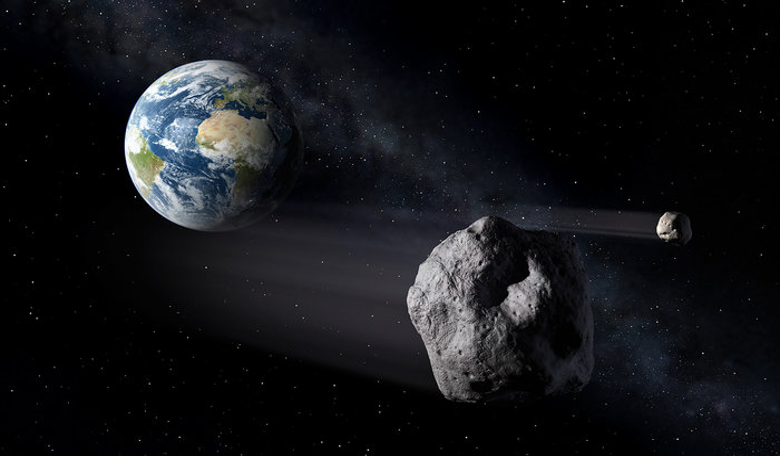Tomorrow marks the third anniversary of Asteroid Day, an event this year that also coincides with the infamous Tunguska asteroid which flattened an area of forest the size of Greater London in Siberia 110 years ago.
Each year, Asteroid Day is broadcast live across the globe with a packed programme that brings together astronauts, scientists and the occasional rock star to highlight the threat posed by the numerous rocky bodies traversing our nearby space.
And what a year for asteroid activity it has been so far. Just a couple of months ago, an asteroid measuring 48 to 110 meters (157 to 360 feet) wide made a very close flyby of the Earth much to the surprise of NASA scientists. This sizeable chunk of rock was up to 3.6 times the size of the Tunguska asteroid and three to six times as big as the one that exploded over Chelyabinsk, Russia in 2013.
With such large asteroids creeping up unexpectedly on our own ball of rock we call home, it was remarkable then that on 4 June, a small asteroid six foot across was spotted hurtling towards Earth hours before it lit up the skies over South Africa. While its size may not have set alarm bells ringing for a potential catastrophic collision, it was only the third time that an asteroid has been discovered to be on an impact trajectory with Earth.
"It is also only the second time that the high probability of an impact was predicted well ahead of the event itself,” said Paul Chodas, manager of the Center for Near-Earth Object Studies (CNEOS) at NASA's Jet Propulsion Laboratory (JPL) in Pasadena, California about the boulder-sized asteroid designated 2018 LA.
But perhaps the most notable asteroid to date appeared on our radar late last year in November 2017. `Oumuamua, our planet’s first interstellar visitor shook up our idea of what an alien asteroid might look like. Its unusual shape caused a flurry of excitement, with some suggesting that the object was actually an extra-terrestrial spacecraft disguised as an asteroid in order to spy on Earth.
However, just this week a new study has found that `Oumuamua is moving away from the Sun faster than expected, implying that the slab of organic-coated rock is most likely a comet and not an asteroid.
“We think this is a tiny, weird comet,” comments Marco Micheli from the European Space Agency. “We can see in the data that its boost is getting smaller the farther away it travels from the Sun, which is typical for comets.” Still, despite its change in status, it is unlikely to be excluded from Asteroid Day celebrations.
So what are the powers at be doing to protect our planet from wayward marauders with the potential to wipe out life on Earth? Well, the Asteroid Institute is developing the Asteroid Decision Analysis and Mapping (ADAM) project with the help of Google Cloud and Analytical Graphics Inc (AGI) and ESA is currently developing cutting-edge widefield telescopes that will have the ability to scan the entire sky in just 48 hours for near-Earth objects (NEO).
ESA has also entered its next engineering phase for an ambitious planetary defence experiment known as Hera. Named for the Greek goddess of marriage, Hera will work in tandem with a NASA mission called the Double Asteroid Redirection Test (DART) project.
DART’s primary objective is to demonstrate the effect a kinetic impact would have on a small asteroid. To achieve this, DART will deliberately smash itself into a 160 metre moonlet informally called ‘Didymoon,’ that is one half of a binary asteroid system called Didymos.
The collision, which is due to take place in October 2022, will lead to a change in the duration of Didymoon’s orbit around its 780 metre-diameter mountain-sized main companion ‘Didymain’ and although ground observatories all around the world will be able to observe the encounter, at a minimum distance of 11 million kilometres away a close-up view of the impact and its after-effects is needed to assess the damage.
“Essential information will be missing following the DART impact – which is where Hera comes in,” explains Hera manager Ian Carnelli. “Hera’s close-up survey will give us the mass of Didymoon, the shape of the crater, as well as physical and dynamical properties of Didymoon.
“This key data gathered by Hera will turn a grand but one-off experiment into a well-understood planetary defence technique: one that could in principle be repeated if we ever need to stop an incoming asteroid.”











